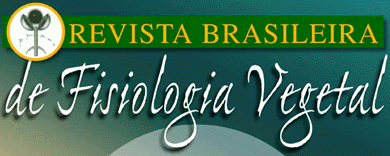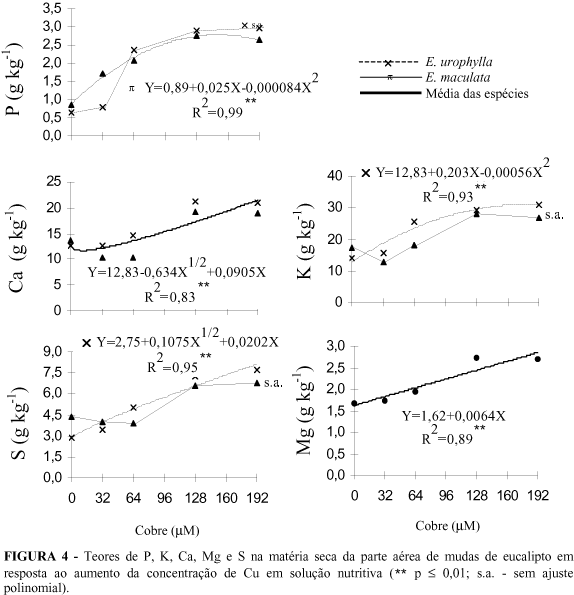The effects of increasing concentrations of Cu in nutrient solution on growth, content and translocation of heavy metals and mineral nutrients in eucalyptus were evaluated. Seedlings of Eucalyptus maculata and Eucalypts urophylla were grown in pots containing 2 L of Clark’s nutrient solution, amended with 0, 32, 64, 128 and 192 m M Cu supplied as CuSO4. After five weeks of growth in the treatments, plants exhibited typical symptoms of Cu toxicity characterized by aqueous stains, interveinal leaf chlorosis and tissue necrosis. In addition to inhibition of growth, roots were dark even at lower Cu concentrations. The critical Cu toxicity concentrations which decreased shoot dry matter by 10%, were 8,3 muM and 3,3 muM for E. urophylla and E. maculata, respectively, whereas plant tissue critical toxicity concentration was between 12 and 13 mg kg-1 for both species, therefore indicating the high sensitivity of the Eucalyptus spp. to Cu. E. urophylla was less sensitive to Cu than E. maculata and this was related to the capacity of this species to restrict Cu translocation to shoots. Fe translocation was reduced by increasing Cu in both species. Translocation index was, on average, 27% in the control and 12% with 192 muM Cu in nutrient solution. However, E. urophylla exhibited higher Fe uptake under excessive Cu. This effect could be one of the causes of the eucalypts sensitivity to Cu. Toxic concentrations of Cu did not reduce uptake or translocation of P, K, S, Ca e Mg. Therefore reduced nutrient uptake does not account for the Cu toxicity effects observed.
Heavy metals; eucalypts; critical toxic levels; forest tree; mineral uptake; translocation






